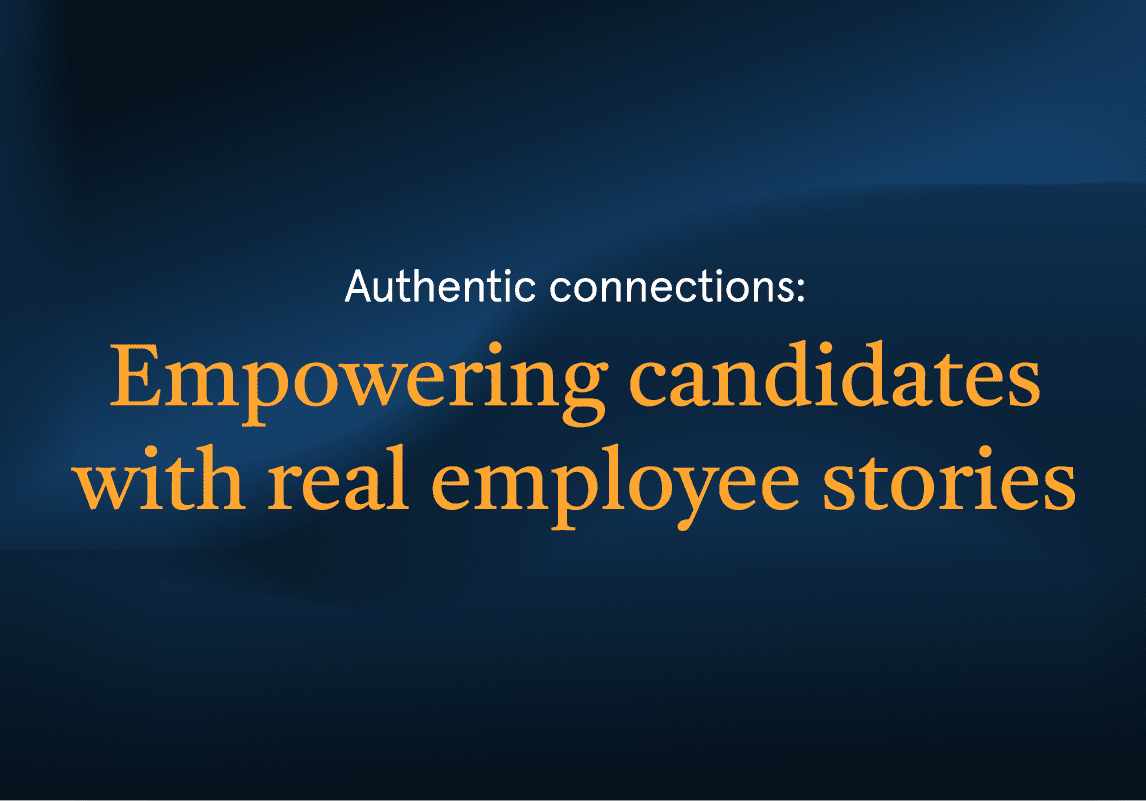Do you know how jobseekers and your employees view your company? Your unique ‘brand’ as an employer has a huge impact on your ability to attract and retain top talent.
Just like consumer-facing businesses like Nike, Coca Cola and Dove have distinct brands, so too do employers. For example, you may think of Google as an innovative, progressive employer, or Tesla as a fast-paced, cutting-edge place to work. These companies have cultivated unique employer brands that help them secure their pick of the best talent.
Despite its importance, employer branding is an often underutilized tactic that can help build quality talent pipelines and attract great people to your company. In this article, we’ll break down the key elements to implementing a successful employer brand strategy.
What is employer branding?
Employer branding is a company’s workplace ‘image’ as perceived by the market. Past, current, and future employees have an opinion of what it’s like to work for your company. These opinions are informed by every touchpoint you have with a person —and together, they make up your employer brand.
Factors influencing your employer brand include company culture, salary and pay transparency, and employee benefits and rewards. Every touchpoint a candidate has throughout the hiring process —from first digital engagement, application, communication, to interview, and offer —also makes up your employer brand.
This includes what candidates have learned about your organization throughout the hiring process. These are things like the diversity of your employee-base, reviews on third-party sites (LinkedIn, Glassdoor, Industry Associations and more), and testimonials from alumni or current employees.
How to develop a robust employer branding strategy
22% of respondents in a recent study by Clinch and Talent Board report that employer branding is one of their biggest challenges. Often, organizations struggle to dedicate enough resources to support a consistent employer branding strategy.
What’s important to remember is that regardless of whether you maintain it or not, every organization has an employer brand.
Your reputation as an employer is known and evaluated by every current and prospective employee —and every jobseeker that’s ever interacted with you.
That’s why you need to proactively develop an employer brand strategy that showcases your organization in the best light. More importantly, your employer brand also needs to resonate with the people you’re trying to attract. That way, ‘wrong-fit’ candidates can self-select out of the recruitment process early on, and you receive more culturally-aligned applicants. Here’s how to articulate your unique employer brand:
Know your organization’s mission and values
Your organizational mission and values help define your employer brand. The best employers are able to distill and amplify their mission and vision statements and inspire employees to uphold these values.
Everyone has a role to play when it comes to building out the company mission and values. For example, your company may be passionate about delivering amazing customer experiences. Incorporate this into your value statement and emphasize why it’s so important to the work you do. Don’t be afraid to ask current and future employees to contribute ideas and allow them vote on the mission statements that resonate.
Conduct internal and external research
To understand how the market views your employer brand, perform thorough internal and external research. Internal research will tell you how your talent audience perceives your business, while external research will tell you how your employer brand stacks up against your competitors.
Send out anonymous employee surveys or sit down with employees and ask them what they like about working for your company. Perform external research by distributing applicant surveys, seek post-interview feedback, and monitor reviews on third-party sites like Glassdoor.
Not pleased with the results? Test new ways to improve the perception of your business in the market, then build this into your employer branding strategy. Things like incorporating testimonials on your career site, amplifying employee stories as part of your social strategy, and delivering a personalized candidate experience all go a long way to improving your employer brand.
Define your employer value proposition (EVP)
Not to be confused with employer brand, an employer value proposition (EVP) outlines the core benefits and value people receive in exchange for the expertise, time and skills they bring to your company. The EVP forms the basis for a company’s employer brand efforts.
To create an appealing EVP, think about what makes your company stand out from the competition. What unique value do you bring to your employees, customers, and clients? What unique benefits do your people get for working with you? These benefits should complement your company brand and appeal to jobseekers in the market. Examples of appealing EVP elements can include:
- A commitment to DEI
- Family values
- An inclusive culture
- Transparency and honesty
- A world-class workplace
- A culture of growth and challenge
Engage current employees
“Engaged employees perform better, experience less burnout, and stay in organizations longer.” These words from Harvard Business Review emphasize the importance of employee engagement in talent retention. Having employees that are aligned to your mission, and who are proud brand champions not only helps to retain your top performers —it can also be leveraged to attract new talent.
To connect your employees to your employer brand, you need to find ways for them to get involved. Share their stories through employee generated content, showcasing your team’s wins on company social media, or asking team members to write and share reviews on sites like Glassdoor. That way, employees feel recognised, while positioning your company as a great place to work.
The key to building a strong employer brand is authenticity —today’s jobseekers appreciate transparency above polished corporate messaging. By engaging with your current employees, you can leverage their stories to build recognition as an authentic employer brand.
Write effective job descriptions
Because a job description is often the first impression for potential hires when seeking a job, it should accurately reflect your employer brand. By making key job description enhancements, some Clinch customers have seen as much as a 400% increase in applications.
How can you achieve the same results?
- Do some research on what your prospective hires are looking for, then craft your descriptions around those key phrases.
- Make your language unique to your employer brand profile and avoid using generic phrasing.
- Prioritize transparency and give people a sense of what a ‘day in the life’ looks like. Being explicit with your job requirements is just another small way to build trust with candidates and in turn, nurture your employer brand.
- Finally, job descriptions shouldn’t be a wall of text: include employee videos and testimonials, photos and more to engage jobseekers and convince them to hit ‘apply’.
Ready to market your employer brand? With Clinch, you can source better applicants using no-code career sites, share employee videos and testimonials, and automate the applicant journey from initial interest to first day. Learn how Clinch can help amplify your employer brand with a 3-minute virtual tour.



